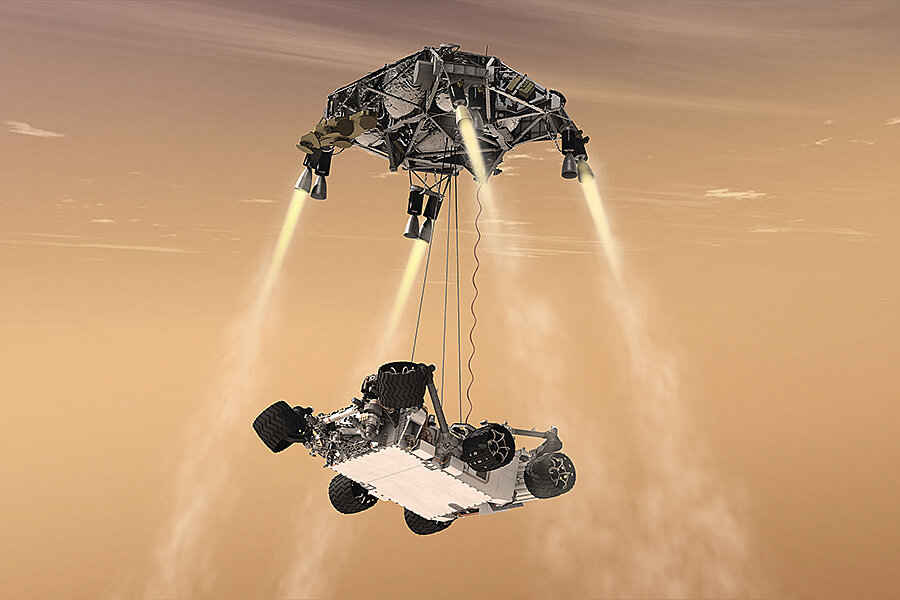Mars tech: from ion thrusters to laser communications
Loading...
Rockets leaving launchpads are the most visible signs that a deep-space human exploration program is under way.
But those missions are the result of behind-the-scenes engineering that provides new technologies. To get humans to Mars, the National Aeronautics and Space Administration is going to have to develop a variety of new technologies. But these technologies can also be used for other purposes, such as robotic science missions or more-advanced commercial satellites, says James Reuther, deputy associate administrator of programs in NASA’s Space Technology Mission Directorate.
For now, the development of the technologies is being prioritized based on their near-term applications beyond sending humans to Mars, Dr. Reuther says. The wider a technology’s potential appeal, the sooner it’s likely to be tested and fielded.
Among the technologies in development:
Ion thrusters. How are you going to get cargo to Mars? One idea is to use powerful solar-electric propulsion systems to power craft that would carry cargo, including habitat modules. The approach uses electricity from solar panels to power a thruster that ionizes a gas such as xenon or oxygen, then accelerates and expels those ions, generating thrust. The approach is five to 10 times more efficient than comparable chemical rockets, allowing missions to pack less fuel and more cargo.
The technology is already powering NASA’s Dawn mission to Vesta and Ceres in the asteroid belt between Mars and Jupiter. A variant of this technology, known as Hall thrusters, is built into communications satellites to keep them in place in their orbits.
But human space exploration demands more powerful thrusters and larger solar panels than have been used to date. New solar arrays are under construction for a demonstration mission in 2018, Reuther says, with a more powerful thruster ready for a demonstration mission in 2018 or 2019.
Laser communication. Radio communication won’t be enough for manned Mars missions. It doesn’t carry the volume of data anticipated for such missions, and it consumes too much power. Currently, radio transmissions carry about 20 megabytes of data per second. That will need to increase by 10 to 100 times.
NASA has been testing laser communication technology. In January 2013, researchers beamed an image of the “Mona Lisa” to the Lunar Reconnaissance Orbiter on the moon. Crews on the International Space Station also have been testing laser communications between the ISS and stations on Earth. The next step is to use a satellite in geostationary orbit to relay optical communications to and from Earth. That test could come in 2018 or 2019. NASA currently is planning to test the system from deep space on one of its Discovery-class unmanned missions by 2022.
Landing systems. To land humans on Mars, scientists need to develop new approaches. In short, current landing systems used for robotic missions couldn’t handle the much more massive vehicles that would be needed for manned missions. The entry, descent, and landing system used to deposit the Curiosity rover after its “seven minutes of terror” in the Martian atmosphere delivered
1 metric ton to the surface. Crewed missions to Mars would be on the order of 10 million to 100 million metric tons, Reuther notes.
It may be 2030 before the technologies needed to do that have been fully demonstrated and are deemed ready for prime time.








